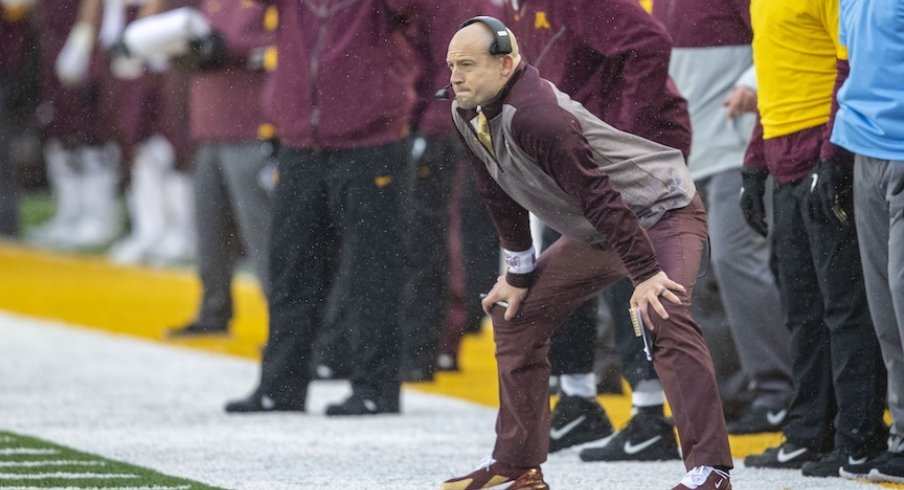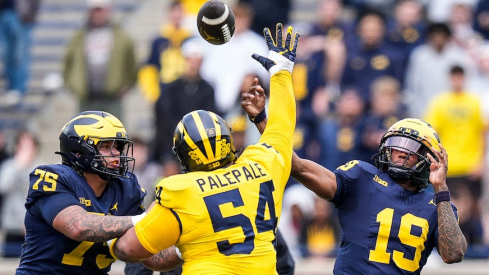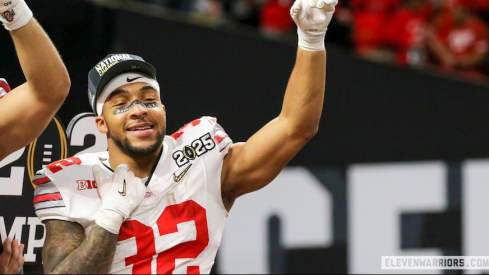In publicly brushing off Minnesota’s mediocre 2020 campaign as “an anomaly,” it’s difficult to assess the sincerity of the sentiment from Ryan Day.
Whether or not the Ohio State head coach believes those words, Day must imbue himself and his team with the sort of edge required to outclass even the best version of its forthcoming opponents – Big Ten or otherwise.
What is not up for interpretation, though, is that the Golden Gophers followed up a breakout 11-2 2019 season – arguably the program’s best in nearly 60 years – with a sub-.500 dud during the COVID-19-shortened 2020 slate. A drastic drop-off in year-to-year performance is nothing out of the ordinary in college football, and especially in a season when reigning national champion LSU went 5-5 and finished unranked, but Minnesota’s case is particularly puzzling.
“Last year was a little bit of an anomaly because they had a lot going on – just like we all did – but some guys were in and out,” Day said Monday on 97.1 The Fan. “So I don’t think it was a great picture of what this team is. I think when you go back to ‘19, it’s probably a better picture – when they were a top-10 team in the country – of who they are.”
Many of the key personnel pieces from the 2019 team returned for the Gophers in 2020. In fact, Minnesota lost just two offensive starters ahead of last season. However, the passing offense suffered some major statistical setbacks, as Tanner Morgan and company completed 8 percent less of their pass attempts, threw for 54 fewer yards per game on average and scored less than half as many touchdowns per game through the air.
Ten starters return from last year’s offense, but there are certainly some caveats about the Gophers’ 2020 output that could lead one to conclude the 2021 team will improve upon its marks in the passing game.
For one, Minnesota head coach P.J. Fleck brought Mike Sanford Jr. onto the staff as the new offensive coordinator and quarterbacks coach for the Gophers in January 2020 – just two months before COVID-19 effectively shut down the world of sports and eventually canceled the Big Ten season for a time. Sanford has now had ample time to get acclimated to the Gopher program and properly implement his vision in Minneapolis.
“We got to move the football offensively,” Sanford said at a press conference Monday. “We're not going to be thinking about this, let's hold on to the ball for ‘X’ amount of minutes because if you start getting tied up with that, you lose sight of where the defense is giving you opportunities. You know to distribute the football, whether it be the run game or in the pass game. We got to move the ball. We got to get first downs and we got to score points. And against a team like this, certainly that's more challenging."
On the other hand, the one starter that Minnesota did lose from last year – first-round NFL draft pick and star wideout Rashod Bateman – would appear to be a significant loss for Morgan and the Gopher pass attack. With Bateman in the offense through the first five games in 2020, Minnesota averaged 26 more passing yards per game than it did in its final two, before which Bateman opted out.
Redshirt senior wide receiver Chris Autman-Bell is thought to be a serviceable replacement for Bateman, but his health remains in question ahead of the season-opening matchup, and the fifth-year Gopher has never caught more than five passes in a game.
Perhaps the most anomalous trend of the Gophers’ 2020 season was the special teams gaffes that cost the team two different overtime matchups with the Big Ten opponents. A failed extra point against Maryland lost Minnesota its second-straight game to start the year, and to close out the season, the Gophers left the door open for a Wisconsin win when they missed a 36-yard field goal on the first possession of overtime.
“I’m not saying it’s fixed,” Fleck said about his team’s special teams units at a press conference last Friday. “This isn’t about just sticking a piece of bubble gum and putting it in a hole in a boat. This is about the ability to have it sustainable over a long period of time.”
On the ground, there was no decline at all for the Gophers between 2019 and ‘20. In fact, Minnesota upped its average rushing production by more than 13 yards per game on fewer average attempts last season, with Mohamed Ibrahim earning the Big Ten’s Running Back of the Year honor in the process. With Ibrahim back and five fourth-, fifth- or sixth-year seniors starting on the offensive line, Day and company would be wise to assume that Minnesota’s run game may be the Buckeyes’ biggest concern.
“They’ve played a lot of football,” Day said. “Ibrahim played here as a freshman when they played here in ‘18, and Morgan’s played a lot of football. There’a a lot of veteran guys on that team.”
The most pressing issue for the Gophers, however, will not be on offense at all. Minnesota did have to replace a handful of starters from its 2019 defense last season, and the results were rather disastrous. The Gophers finished 2020 with the 102nd-best run defense in the country, and the only starter Minnesota loses from that unit is defensive back Benjamin St. Juste.
A returning core would suggest that improvements could be made, but even the best form of Minnesota could have trouble slowing down the Buckeyes if they are operating at full capacity. That may not be the case with a new quarterback under center, questions at running back and a retooled offensive line, but Day has not been a wise man to bet against in Big Ten competition thus far in his head coaching career.
If the Gophers are to keep it close against Ohio State on Thursday, they’ll have to prove Day right and show the country that 2020 was the aberration after all.
"I'll be really excited to finally be able to not talk about 2020 anymore," Sanford said. "If that's the case and that's the plan. But we also know there's gonna be some adversity that's gonna head our way and we're going to respond to it."


